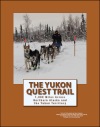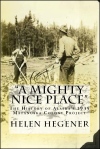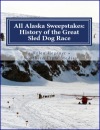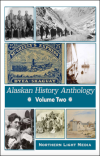 From the March-April, 2020 issue of Alaskan History Magazine:
From the March-April, 2020 issue of Alaskan History Magazine:
The first trails in Alaska were made by animals, those which came after that showed where the earliest men and women traveled. Then came the explorers, the missionaries, the scientists, the prospectors….
The Yukon, Tanana, & Kuskokwim Rivers
The earliest trails in Alaska were generally those which relied on the frozen rivers, lakes, and streams which crossed the land, the largest rivers being the main thoroughfares, with smaller streams branching off toward destinations, and lakes and ponds providing easy access across sometimes rough country. Most early maps of Alaska include the notations for Winter Trails; in the other three seasons these trails simply did not exist, or they were traveled by rafts, boats or canoes. Still today many trails rely on frozen waterways for part of their length, i.e. the Iditarod Trail on the Yukon River between Ruby and Kaltag. 
The Native Trails
Native groups traditionally created their own transportation networks, utilizing local paths for subsistence activities, while longer trails were used for hunting, intertribal trade, and occasional raiding trips. These routes usually followed the contours of the land, tracing natural corridors. Exploring Keystone Canyon north of Valdez in 1884, Lt. Abercrombie reported “a deep and well-worn trail up the canyon and across to the Tiekel River in the Copper River valley.”

Glacier Trails
In the late 1880’s prospectors objecting to foreign control of the Chilkoot and White Pass transportation corridors began seeking an All American route to the Klondike goldfields, but they found only one way across the mighty Chugach mountain range: an exceptionally difficult and dangerous path over the Valdez and Klutina glaciers. In 1898, the army sent Abercrombie back to locate a safer way. Spotting the remains of a Chugach trail leading to the north toward Keystone Canyon, he proceeded to the interior via the Valdez Glacier, and found an Ahtna path leading up the right (or western) bank of the Copper River. Both were eventually utilized by the Valdez Trail.

Read more about the early trails in Alaska in the March-April, 2020 issue of Alaskan History Magazine.

March-April, 2020 issue, Vol. 2, No. 2, postpaid
The March-April, 2020 issue of Alaskan History Magazine features a wide range of Alaskan history, from some of the first photographs of Alaska by Eadweard Muybridge, to the earliest settlers at Valdez, and an adventuresome lady musher who blazed trails where today’s Alaska Highway crosses the northern landscape. Also Dr. James Taylor White on the U.S. Revenue Cutter Bear, and Luther Sage “Yellowstone” Kelly, an Indian scout who helped write Alaska’s history.
$10.00





























